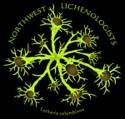Thanks Bruce. I've seen it a few more time with no other epiphytes present. These sites are very "cold" and shady and are interesting with other community differences: new mosses and lichens not seen elsewhere in the crust.
I found the paper by Irwin Brodo in The Bryologist (The Lichen Bryoria subdivergens (Dahl) Brodo & D. Hawksw. in Greenland and North America, 1981).
He writes: "the main distinguishing features are the very dark, slender, much foveolate and twisted decumbent branches, arctic-alpine distribution, and lichenicolous or terricolous habitat."
I would really like to verify the species. N. subdivergens is listed as a species of concern in MT. It would be almost directly across the valley from the collection you made on St. Mary. Even though it is not alpine where I found it, it is on an extremely steep and north facing slope, so the microclimate could fit.
As far as molecular studies on Nodobryoria, I wonder if that was something I could do? There are people doing genetic work at MPG so our lab may be equipped, but I don't know much about it. Or could I send samples out somewhere?
Thanks for your help!

